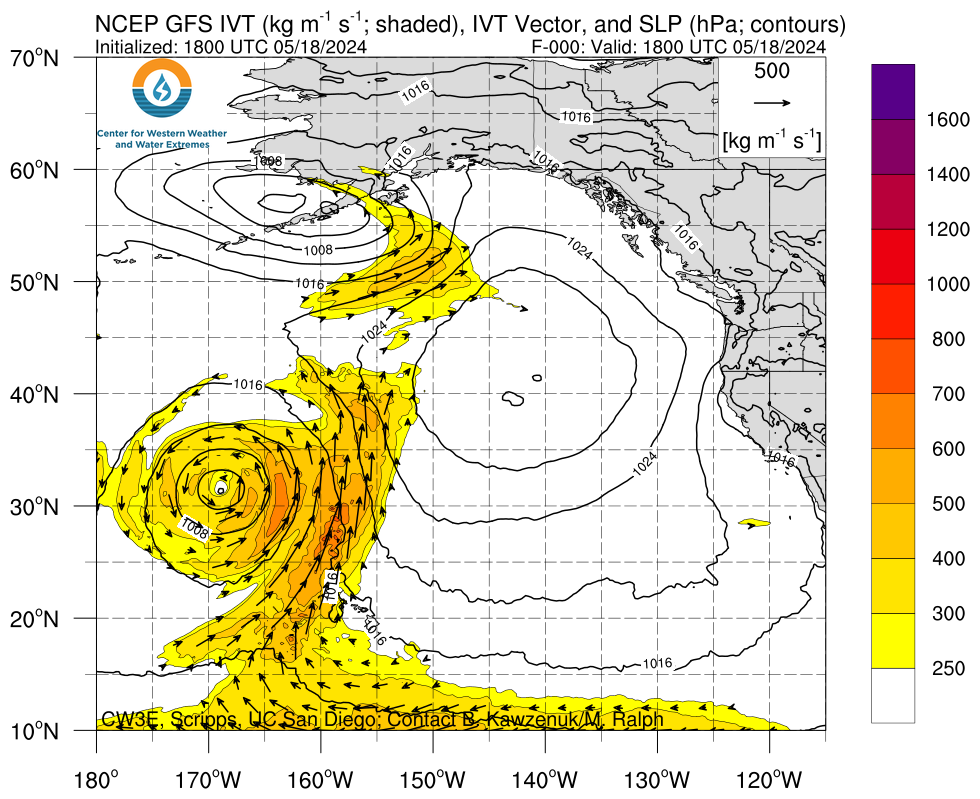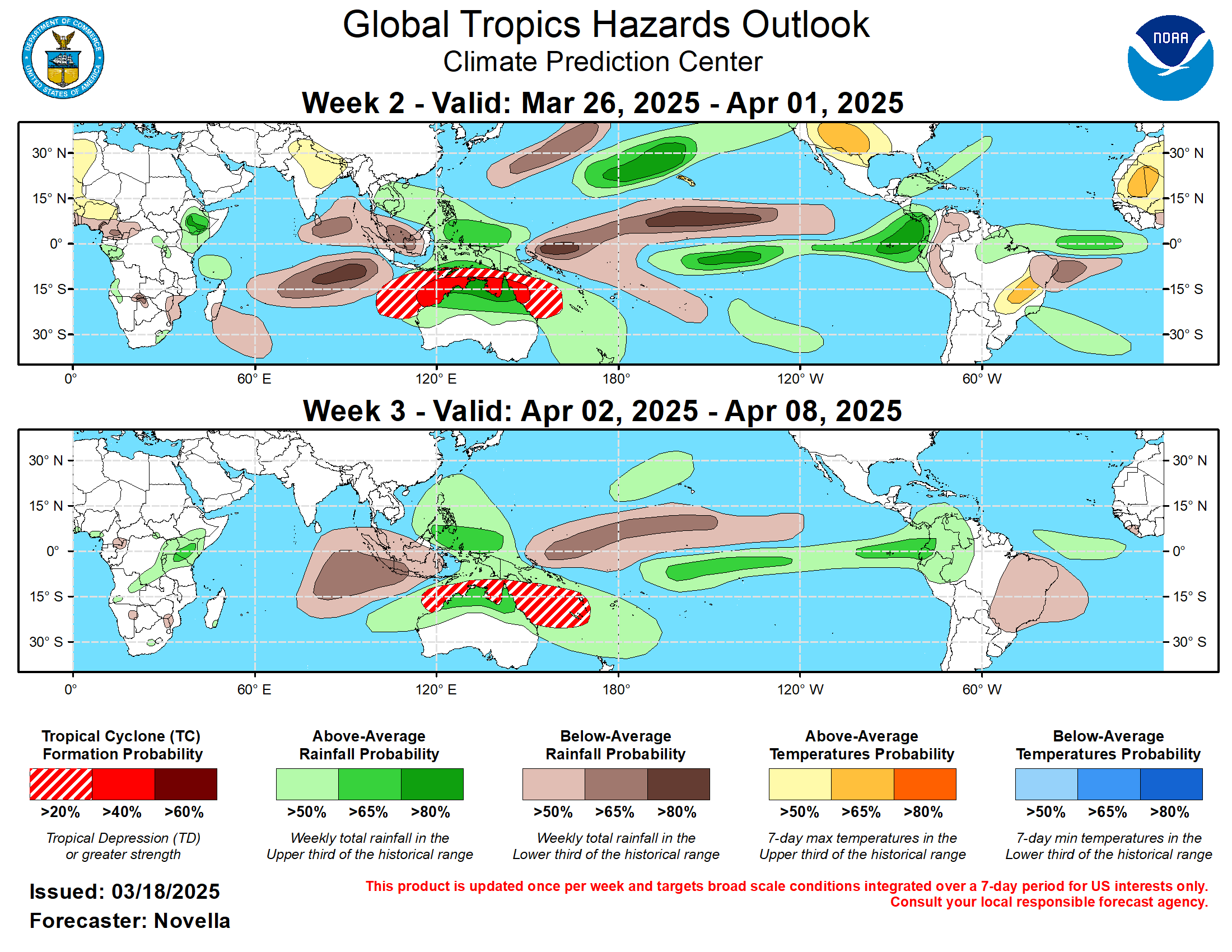This article focuses on what we are paying attention to in the next 48 to 72 hours. The article also includes weather maps for longer-term U.S. outlooks and a six-day World weather outlook which can be very useful for travelers.
First the NWS Short Range Forecast. The afternoon NWS text update can be found here after about 4 p.m. New York time but it is unlikely to have changed very much from the morning update. The images in this article automatically update.
Short Range Forecast Discussion
NWS Weather Prediction Center College Park MD
Sun Aug 25 2024
Valid 12Z Sun Aug 25 2024 – 12Z Tue Aug 27 2024…Record heat relents over the Southern Plains as the heat shifts
northward into the central/northern Plains and Midwest……Severe storms and isolated flash flooding possible for the Northern
Plains/Upper Midwest Sunday-Monday……Daily monsoonal thunderstorms continue across the Four Corners region,
shifting eastward into the southern Rockies/High Plains...As the cool upper trough pushes farther inland across the western U.S.,
the heatwave over portions of the Southern Plains will gradually relent
during the next couple of days. Meanwhile, deep southerly flow ahead of
the upper trough will direct the heat farther north into the central and
northern Plains today before spreading into the Midwest on Monday, then
reaching into the Great Lakes on Tuesday. The area of major HeatRisk
today will expand well to the north across much of the central and
northern Plains into the upper Midwest. By Monday into Tuesday, extreme
HeatRisk is forecast to overspread the Midwest and toward lower Michigan
where maximum heat indices are forecast to reach well into the 90s to the
mid-100s in the afternoon, prompting widespread heat-related advisories
and warnings. Extra caution should be observed by those without effective
air conditioning and anyone who must be outdoors should remain adequately
hydrated.A cold front marking the leading edge of a large dome of cool air over the
western U.S. will reach into the Northern Plains on Monday, bringing
relief to the heat into the region. However, the cold front will also
bring a period of inclement weather across the northern Plains on Monday,
followed by the possibility of severe thunderstorms by Monday night into
Tuesday toward the upper Midwest. This is in response to strong
upper-level dynamics ahead of the upper trough interacting with a low
pressure system that is forecast to form along the cold front over the
northern Plains. The Storm Prediction Center highlighted an area of
enhanced risk for severe weather across the northern Plains toward the
upper Midwest from Monday into early Tuesday, with a chance for
potentially larger hail and significant damaging winds. Some locally
heavy rainfall and isolated flash flooding will also be possible. By
early Tuesday, the severe weather threat is forecast to shift east into
the Great Lakes with areas of heavy rain farther north from the upper
Midwest to the upper Great Lakes as the low pressure system passes to the
south.Across the Southwest, daily monsoonal thunderstorm chances will continue,
initially focusing over the Four Corners region today before shifting east
to mainly across the southern Rockies for Monday and Tuesday. Deep
moisture and moderate instability will lead to some more intense
thunderstorms with locally heavy downpours along with some isolated flash
flooding especially for terrain sensitive areas such as burn scars.
Besides the rainfall, the big story across the West the next few days will
be the much below average temperatures expected behind a strong cold
front. Widespread high temperatures in the 60s and 70s will be common
across the Pacific Northwest, northern Rockies, Great Basin, and northern
California, with near record low maximum values for some locations. Lows
are dipping into the 40s and even 30s this morning for much of the
interior Pacific Northwest and Great Basin where Frost Advisories are in
effect in portions of Nevada. Some post-frontal showers and storms over
portions of the Great Basin will expand across the northern Rockies into
the northern High Plains tonight into Monday, and then across the northern
Plains later on Monday into early Tuesday. Elsewhere, some showers and
storms with moderate to locally heavy rainfall will be possible Monday
into Tuesday over New England when a back-door upper-level wave passes
over the region. Daily showers and thunderstorms will also be possible for
Florida and along the Gulf Coast with a lingering frontal boundary in the
region. Over the Pacific Northwest, showers associated with the next
system from the Pacific are forecast to arrive Monday night into early
Tuesday.
To get your local forecast plus active alerts and warnings click HERE and enter your city, state or zip code.
Learn about wave patterns HERE.
Then, looking at the world and of course, the U.S. shows here also. Today we are looking at precipitation.
Please click on “Read More” below to access the full Daily Report issued today.
| Notices: What would you like to learn about? Please provide that to me via the comment section at the end of the article. |
Now more detail on the 48-Hour Forecast (It is a 48 to 72 Hour Forecast actually)
Daily weather maps. The Day 1 map updates twice a day and the Day 2 and 3 maps update only once a day. These maps update automatically. But if that does not happen, you can get updates by clicking HERE
TODAY (or late in the day the evening/overnight map will appear) (Key to surface fronts shown on maps and you will then also be able to insert a city name or zip code and get a local NWS forecast).
TOMORROW
NEXT DAY
We have a new animation of the forecast which shows how things may play out over the next 60 hours. To update click ANIMATION. Doing so will get you to the dashboard. You can then step through the animation or hit LOOP on the upper right of the display. You will have to hit the back arrow ← at the top left on your computer to get back into this article. It is a little more trouble than before but I think NOAA scrapped the animation routine I was using so we have to keep up with “progress”.
The NWS Climate Prediction Center’s: Watches, Warnings, and Advisories plus other information can be found HERE. That takes you to the NWC Severe Weather Site. From there you can select among many categories of information. Remember to hit the back arrow ← at the top left of your screen to return to this article.
ATMOSPHERIC RIVERS
This tells us what is approaching the West Coast. Click HERE to update If I have not gotten around to doing the update. Here is some useful information about Atmospheric Rivers.
Below is the current five-day cumulative forecast of precipitation (Updates can be found HERE)
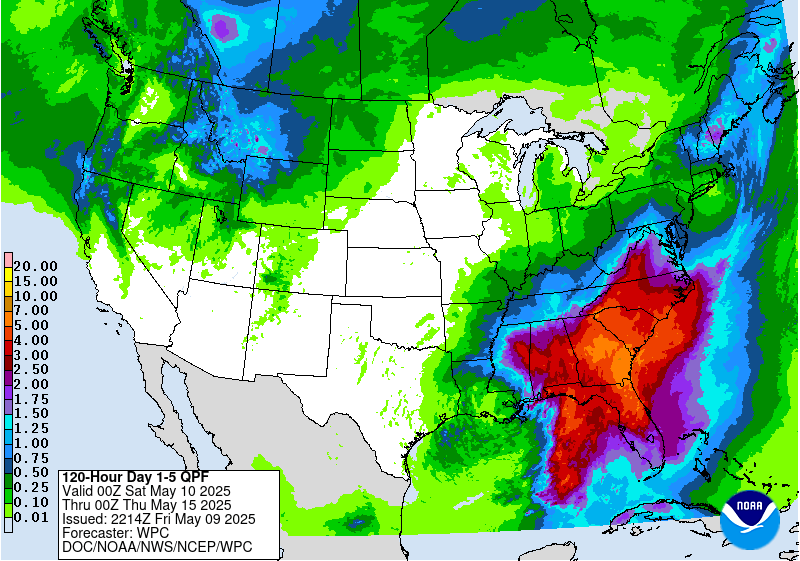
Ski SnowReports will Resume in the Fall.
Now we look at Intermediate-Term “Outlook” maps for three time periods. Days 6 – 10, Days 8 – 14, and Weeks 3 and 4. An outlook differs from a forecast based on how NOAA uses these terms in that an “outlook” presents information as deviation from normal and the likelihood of these deviations.
Below are the links to obtain updates and additional information. They are particularly useful if you happen to be reading this article significantly later than when it was published. I always try to provide readers with the source of the information in my articles. These links may also be useful for those viewing this article on a cell phone or other small screen.
| Days 6 – 10 (shown in Row 1) | Days 8 – 14 (Shown in Row 2) | Weeks 3 and 4 (Shown in Row 3 but updates only on Fridays) |
| https://www.cpc.ncep.noaa. gov/products/predictions/610day/ | https://www.cpc.ncep .noaa.gov/products/predictions/814day/ | https://www.cpc.ncep.noaa.gov/products/predictions/WK34/ |
Showing the actual maps. They should now update automatically. The Week 3 – 4 Outlook only updates on Fridays. So below is what I call the Intermediate-term outlook. On Fridays, it extends out 28 Days. That declines day by day so on Thursday it only looks out 22 days until the next day when the Week 3 – 4 Outlook is updated and this extends the outlook by one additional week.
| 6–
10
|
|
|
| 8–
14 |
|
|
| 3–
4 |
|
|
HAZARDS OUTLOOKS
Click here for the latest complete Day 3 -7 Hazards forecast which updates only on weekdays. Once a week probably Monday or Tuesday I will update the images. I provided the link for readers to get daily updates on weekdays. Use your own judgment to decide if you need to update these images. I update almost all the images Friday Night for the weekend edition of this Weather Report. So normally readers do not need to update these images but if the weather is changing quickly you may want to.
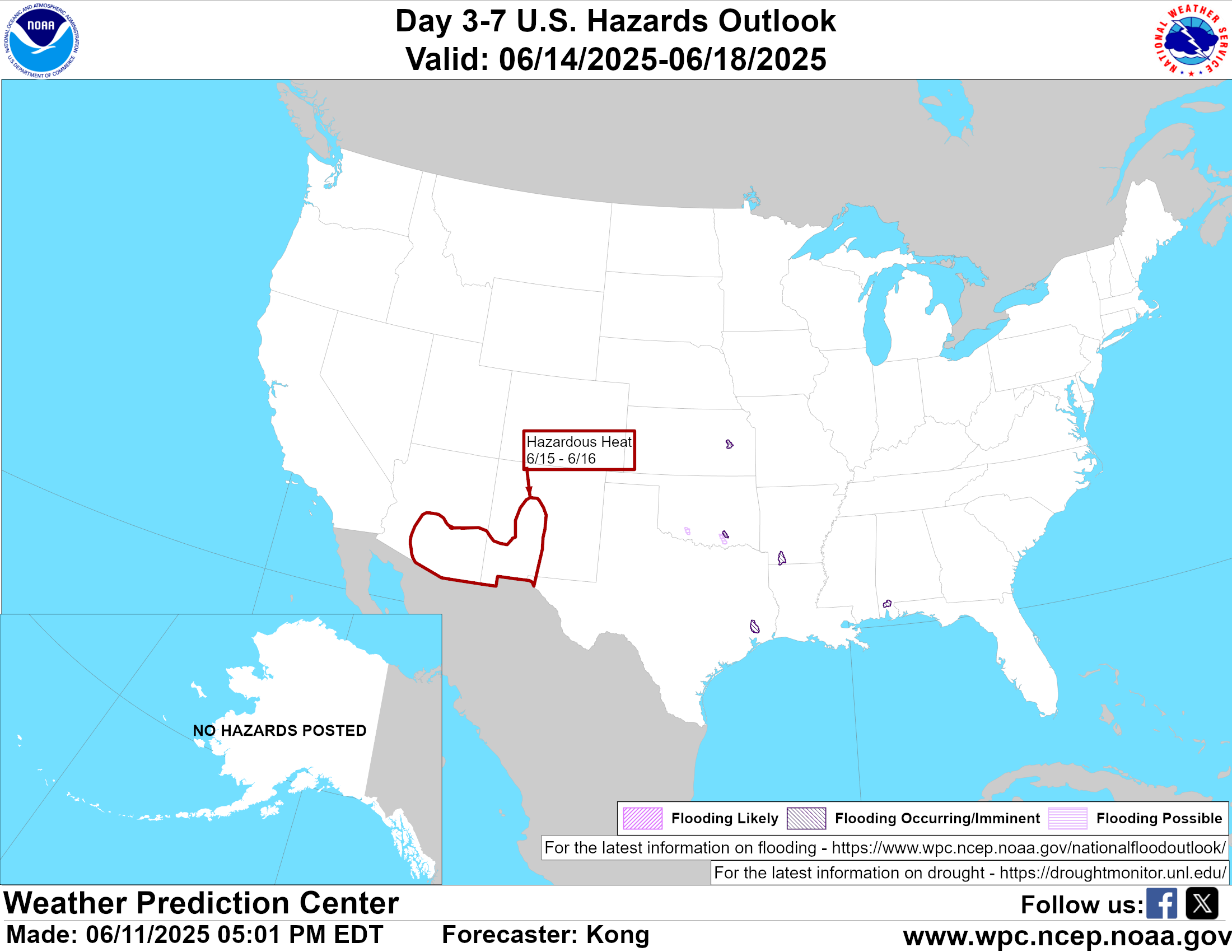
Temperature month to date can be found at https://hprcc.unl.edu/products/maps/acis/MonthTDeptUS.png
Precipitation month to date can be found at https://hprcc.unl.edu/products/maps/acis /MonthPNormUS.png
World Forecast [that website is has been intermittent so be patient]
Below are the Day 1 -3 and 4-6 forecasts for temperature and precipitation. Updates and much additional information can be obtained HERE
World Temperature Anomalies

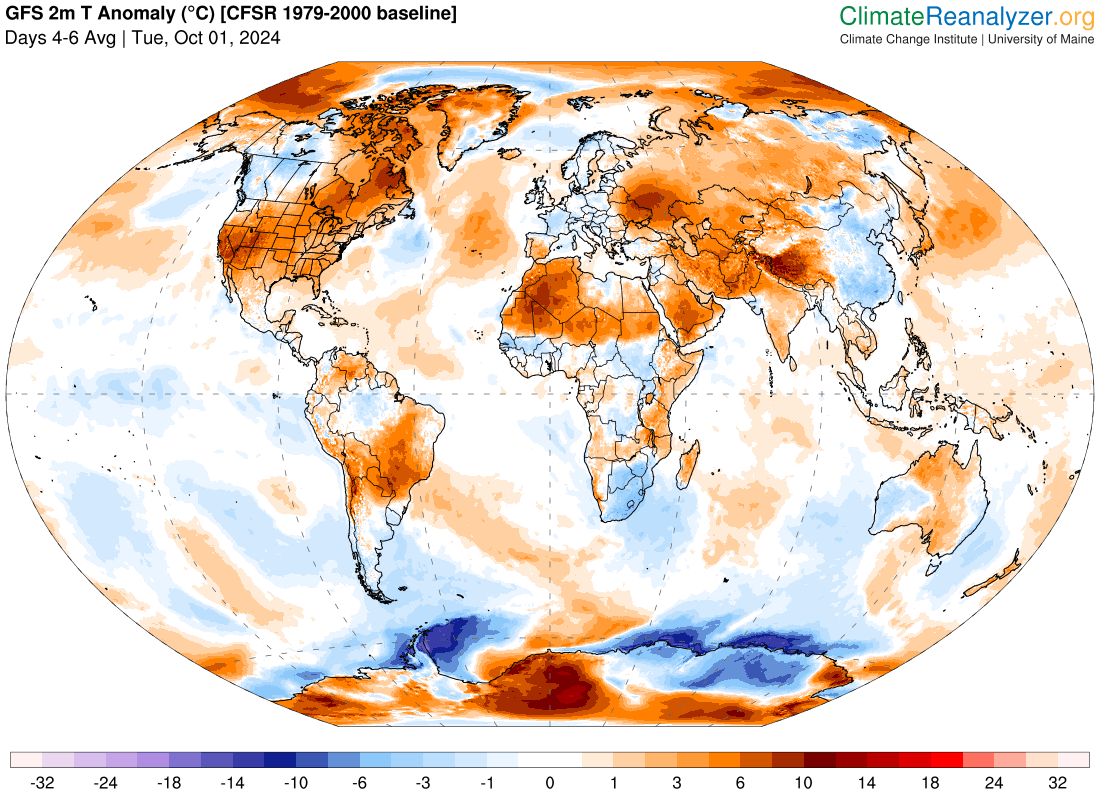
World Accumulated Precipitation
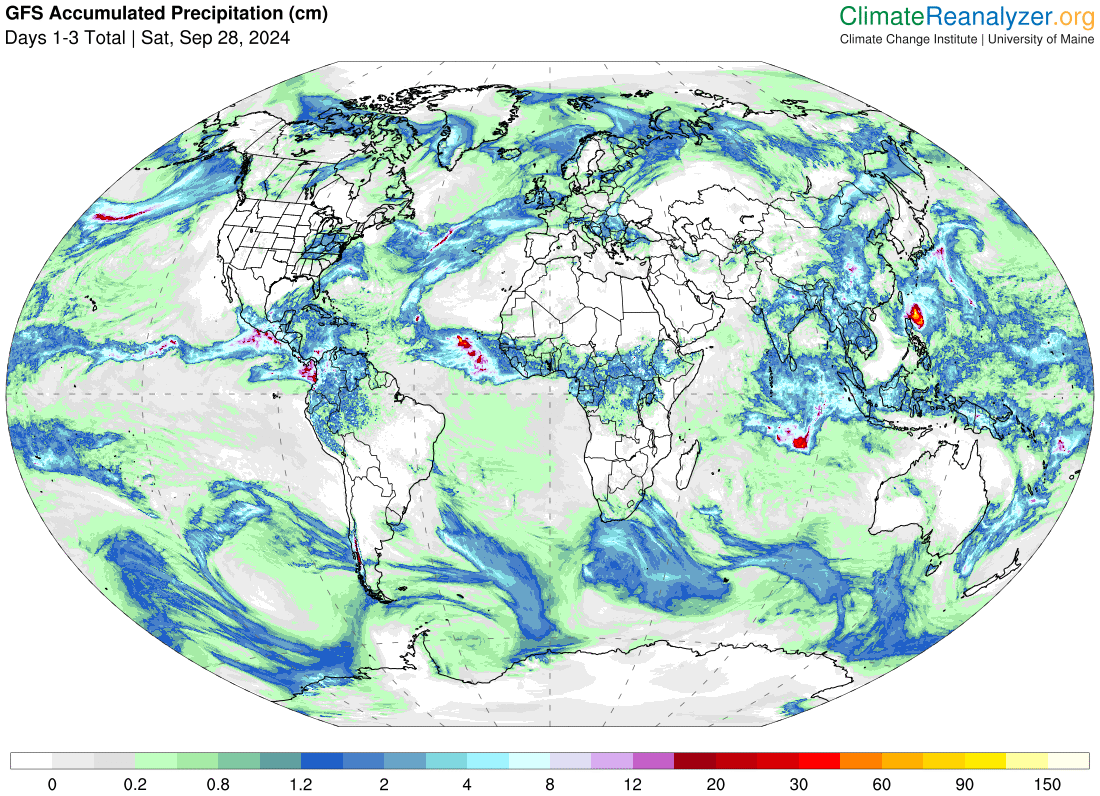

This information is provided by the University of Maine. They draw upon many different sources. There is a lot of information available at the link provided. I have just provided two useful forecasts. There are probably over a hundred different forecasts available from this source.
Worldwide Tropical Forecast (This is a NOAA Product)
This graphic updates on Tuesdays) If it has not been updated, you can get the update by clicking here Readers will only have to do that if they are reading this article much later than the date of it being published.
Information on Tropical Storms can be found HERE. Western Pacific information can be found HERE. Note that unless there is an out-of-season storm the below images will not update until the National Hurricane Center starts their seasonal update of these maps on June 1. I include them simply because there can be an out-of-season event in which case it should show up in these maps.

–
I hope you found this article interesting and useful. –

